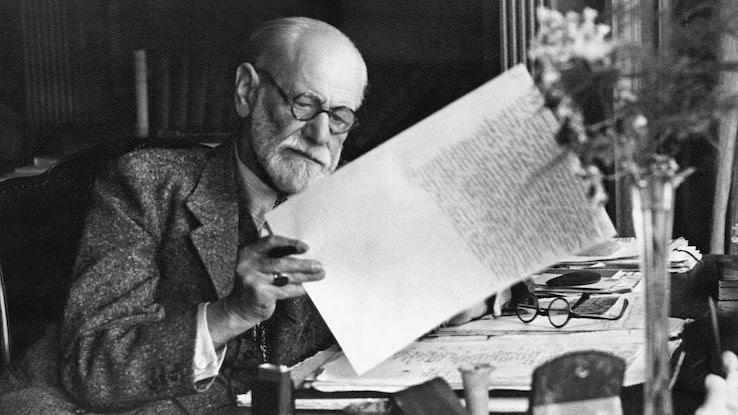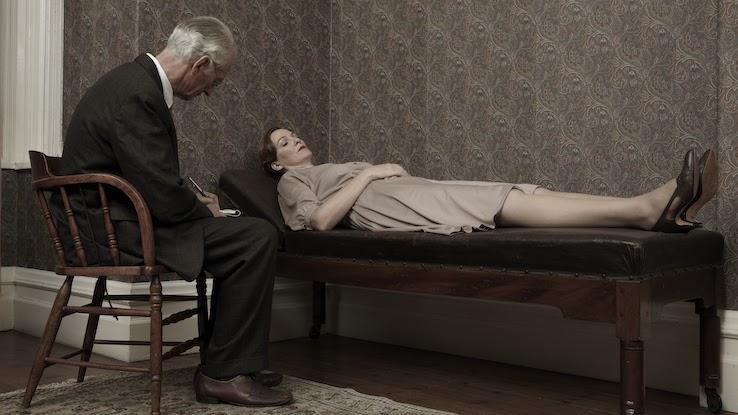Modeling

According to Great Ideas in Personality, i of the greatest strengths of psychoanalytic theory is that it can be used to explicate the nature of human evolution and all aspects of mental functioning. Withal, critics of psychoanalytic theory merits that it grossly exaggerates and generalizes human beliefs. So, with this in mind, we're delving into both the strengths and weaknesses of psychoanalytic theory too every bit its origins.
Freud's Psychoanalytic Theory
In 1896, when Austrian neurologist Sigmund Freud was 40 years old, he first coined the term "psychoanalysis." Freud divers psychoanalysis as a kind of therapy for treating mental illness, equally well equally explaining the intricacies of human behavior by focusing on the mind's unconscious. Specifically, he posited that what a person goes through equally a child plays a significant role in shaping their personality and behavior every bit adults.

At the root of Freud's psychoanalytic theory is a specific goal: to bring the contents of a person'southward unconscious or hidden listen to the level of consciousness. He believed that people often had repressed emotions they cached so deep that they did not have access to them. The work of a psychoanalyst is to uncover repressed memories and emotions to care for mental illness and neuroses.
Freud graduated with his medical caste in neurology in 1881 and prepare up a individual practice shortly thereafter where he treated patients with psychological disorders. Nevertheless, it wasn't until his teacher and colleague, Josef Breuer, treated "Anna O" that Freud saw his career accept a meaningful plow. The case of Anna O, which Breuer shared with Freud, was pregnant because Breuer claimed his psychoanalytic treatment worked.
Anna O was diagnosed with hysteria, and dealt with symptoms similar hallucinations, paralysis, and convulsions, all without a known physical crusade. Because of her treatment with Breuer, Anna O was able to call back repressed memories and traumatic events from her past, which reportedly cured Anna O of her paralysis.
Every bit a consequence, Freud experienced a "lightbulb moment" when Breuer shared Anna O's story with him. Freud believed that physical symptoms oftentimes had repressed emotions and traumas at their root. Before Freud brought information technology to life, this theory didn't be.
Psychoanalytic Model
Freud'due south psychoanalytic model separates the heed into three sections: conscious, preconscious, and unconscious. The conscious heed contains current thoughts, feelings, and attention, while the preconscious listen, more commonly referred to as the subconscious, contains information that nosotros can remember and remember from our memories. According to Freud, the unconscious mind exists at a deeper level. In it, nosotros store the mechanisms that bulldoze our behavior, including our inherent desires and instincts.

Farther into his career, Freud developed an even more structured model of the mind that originated from the three levels of consciousness he previously theorized. This model consisted of three layers of the mind one time again:
- The id is part of the unconscious heed. It works at an unconscious level based on instinct. Freud said that human biological instincts have two kinds of operation: Eros activates life-sustaining behaviors. It is the instinct to survive. Thanatos is its opposite, the expiry instinct. Information technology activates aggressive and destructive activity.
- The ego begins development during infancy. Information technology works in service of the id while as well acting every bit a cheque-and-balances system. Largely connected to reality, the ego makes sure nosotros behave in ways that are socially acceptable.
- The superego, also role of the unconscious mind, is home to our sense of morality. It advocates for morally based, principled action.
Psychoanalytic Approach
Freud's psychoanalytic approach was largely based on his model of the man mind. In practice, he operated with the belief that the id, ego, and superego were always acting in conflict with 1 some other because of their contrasting primary goals, hence our reliance on mental defense mechanisms.

For instance, Freud believed that repression was a defense mechanism of the ego to protect the conscious mind from agonizing thoughts. He also posited that projection, another defence mechanism, was the ego'southward solution for improper thoughts and feelings; that is, your heed would put them on another person instead of allowing you to face up them.
In practise, psychoanalysis focused on the unconscious mind — non the conscious heed. As the field of psychology has developed and transformed over the years with new scientific research and insights, experts accept developed modern talk therapy, which has some roots in Freud's original psychoanalytic model.
Weakness of Psychoanalytic Theory
Freud's theory of psychoanalysis has received its fair share of criticism from psychologists, many assertive that information technology is either bad scientific discipline or not scientific discipline at all. Those who fall into the camp that psychoanalysis is bad science, or "pseudoscience," say this because it was non based on plenty quantitative and experimental research. Instead, Freud used the clinical case study model to defend the legitimacy of psychoanalysis, which does non scientifically verify that psychoanalysis works.

Even some psychoanalysts feel that psychoanalysis isn't science and never had any intention of being science. Those in this camp believe psychoanalysis to be a philosophy that helps to explain some of the connections between childhood events and adult personality and behavior. This definition would make psychoanalysis as a course of professional psychological treatment unethical.
Freud's theory of psychoanalysis neglects individual differences in patients. Because patients are not withal, using the aforementioned system of psychoanalysis for everyone is likely not the nearly constructive mode of treating mental disease. As a result, psychoanalysis becomes unaccountable. Additionally, psychoanalytic theory is largely based on exploring a person'southward childhood and their potential repressed memories from that time. It may not always be the case that the issue stems from something that happened in childhood, which would brand psychoanalysis unhelpful for some.
Strengths of Psychoanalytic Theory
Patients looking to dive deep into their psyche to understand the motive of their behaviors ofttimes find psychoanalysis useful. Furthermore, patients who want to sympathize and deal with certain experiences that accept left them confused might besides notice value in psychoanalysis.

Considering of its nature, psychoanalysis is a long, fatigued-out, intensive treatment that tin provide a lot of insight into what drives a person's behavior. Long-term, securely analytical therapy has been shown to accept subsequent long-term positive results. Research has shown that it can be effective for many different mental and behavioral disorders and that the results are further-reaching than medical treatments. This is in part because patients learn life skills during the course of their treatment that they tin take with them into their day-to-mean solar day lives.
Without Freud's psychoanalytic theory, modern-mean solar day talk therapy would non exist. While many of Freud'due south ideas have been updated or replaced by methods backed by science and research, his groundbreaking contributions to the field of psychology are evident.
sayersafteally1956.blogspot.com
Source: https://www.reference.com/world-view/strengths-weaknesses-psychoanalytic-theory-7e2731eb633f2ca1?utm_content=params%3Ao%3D740005%26ad%3DdirN%26qo%3DserpIndex